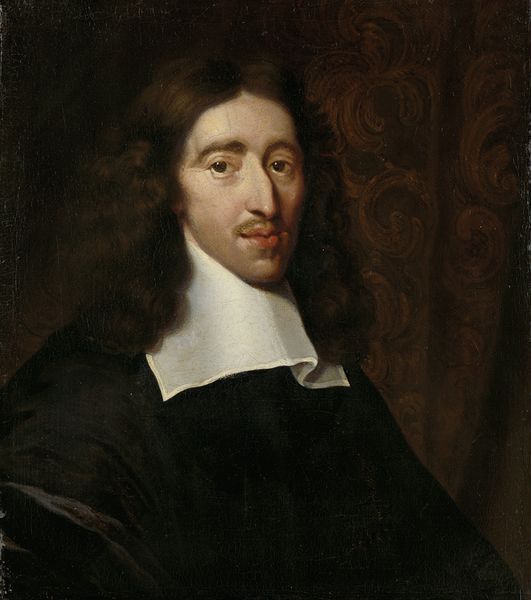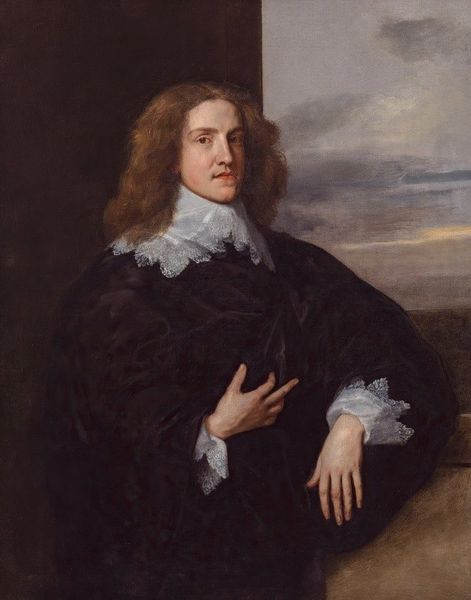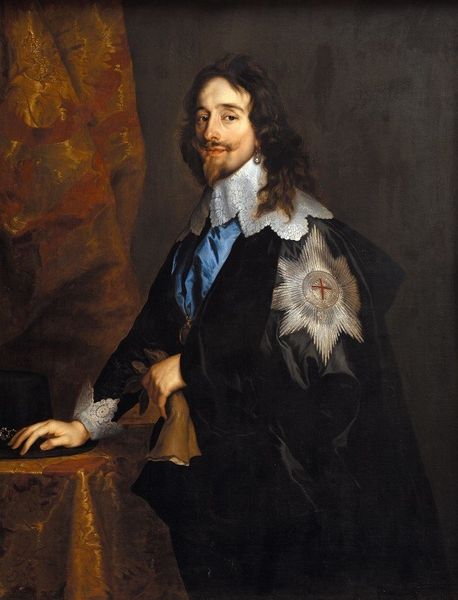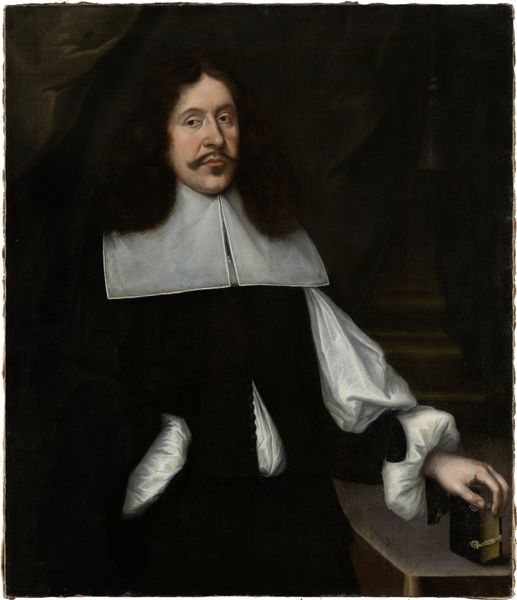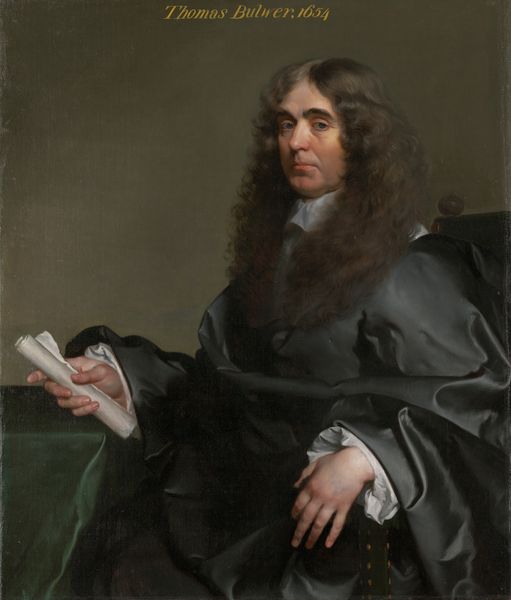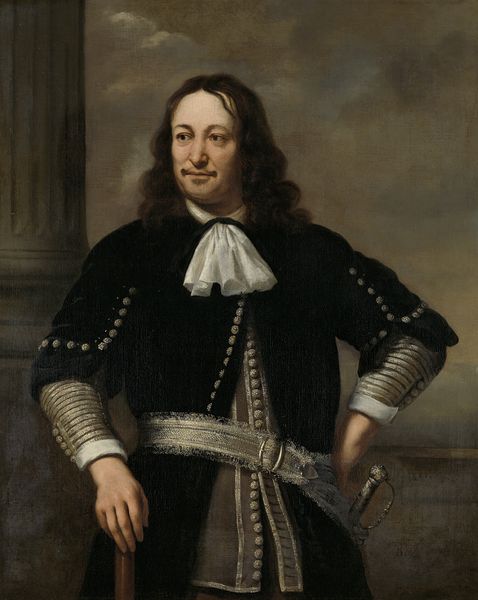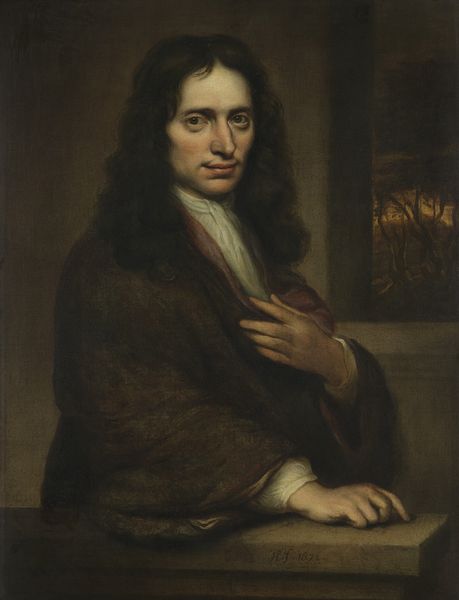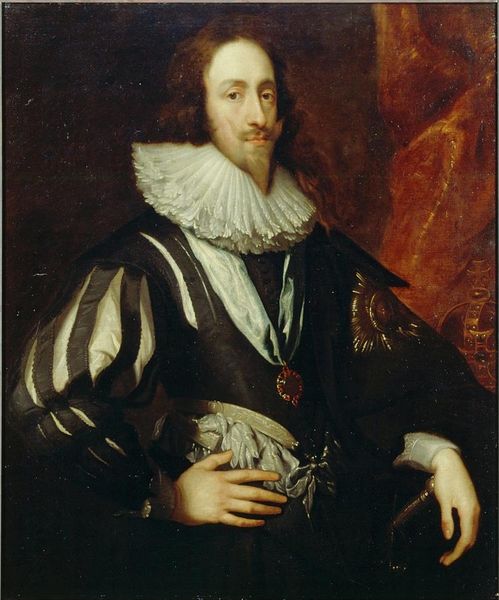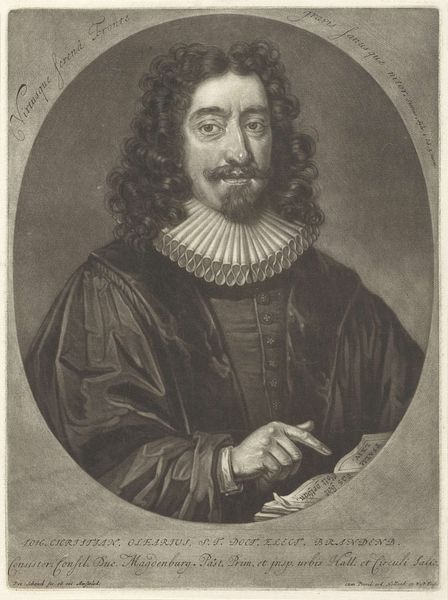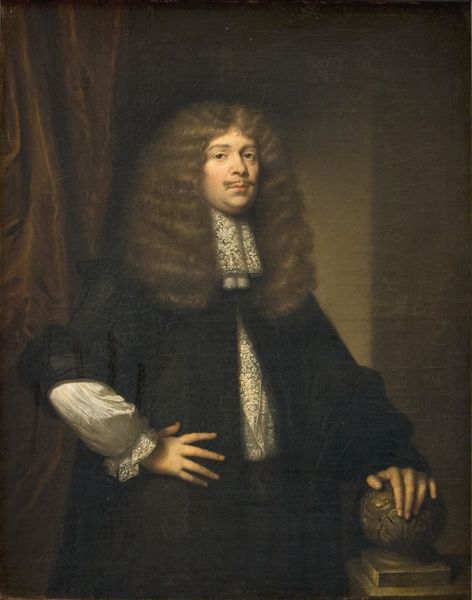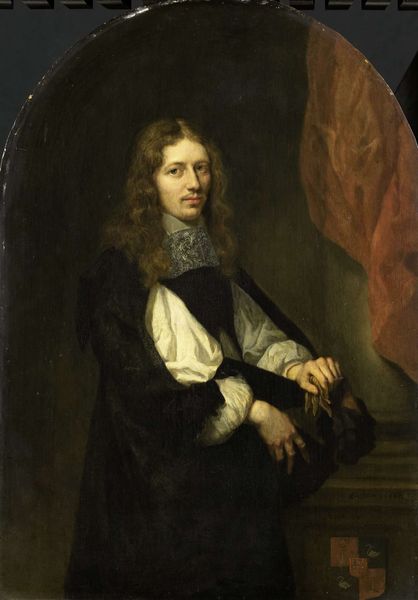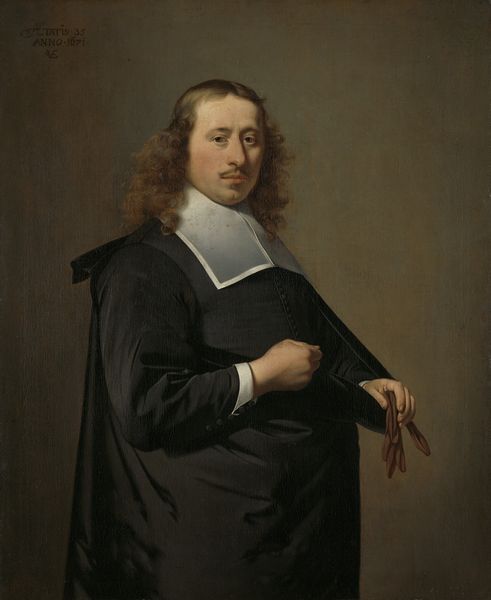
painting
#
portrait
#
baroque
#
portrait image
#
portrait
#
painting
#
portrait reference
#
portrait head and shoulder
#
portrait drawing
#
history-painting
#
facial portrait
#
portrait art
#
fine art portrait
#
celebrity portrait
#
digital portrait
Dimensions: height 122.5 cm, width 96.4 cm, thickness 3.5 cm, depth 6 cm
Copyright: Rijks Museum: Open Domain
Curator: This painting, currently hanging here in the Rijksmuseum, is a portrait of Johan de Witt, the Grand Pensionary of Holland, painted by Jan de Baen sometime between 1643 and 1700. Editor: My first thought? Stoic. The somber hues and the fellow’s gaze just radiate a sense of burdened responsibility, don’t you think? Makes you wonder what was weighing so heavily on his mind. Curator: Well, as Grand Pensionary, De Witt effectively led the Dutch Republic during a tumultuous period. The Anglo-Dutch Wars, internal political strife… His hand position, resting on his stomach, that could symbolize caution and restraint, characteristic of his leadership style. Editor: It's interesting, the composition draws the eye right to that hand. Is that architecture in the background, or an exceptionally fancy doorway? Gives the impression of power, almost stage-like. I suppose leading a republic could feel like being on a stage sometimes. Curator: Indeed. Baroque portraiture often employs such backdrops to enhance the sitter’s status. The use of chiaroscuro, the dramatic contrast between light and dark, also reinforces that. But it’s important to remember these images served to solidify power. Editor: Chiaroscuro, eh? The artist used it to cloak Johan's body in a large black space, obscuring. It is also such an attention-grabber in contrast to that blindingly white collar! Was he so powerful that he chose the painter? Makes you wonder about all the hands involved in shaping that legacy. Curator: Certainly, the patronage system was key. De Baen was a sought-after portraitist. Painting styles conveyed political messaging and reflected power dynamics between patrons and artists. Editor: This wasn't just painting someone; it's constructing an image for posterity, right? A fascinating dance between individual expression and the larger narrative. I imagine him thinking how future generations would view him through this single painting. Curator: Precisely. It makes you question the nature of truth in art. This single painting is a constructed image of him, rather than just a mere record. We look for truths and stories of De Witt in de Baen’s painting, as well as in their world, and our own as well. Editor: Looking back at this portrait again, it feels heavy in so many ways: Heavy with secrets, heavy with responsibilities. Thank you for unpacking all this for me!
Comments
No comments
Be the first to comment and join the conversation on the ultimate creative platform.
